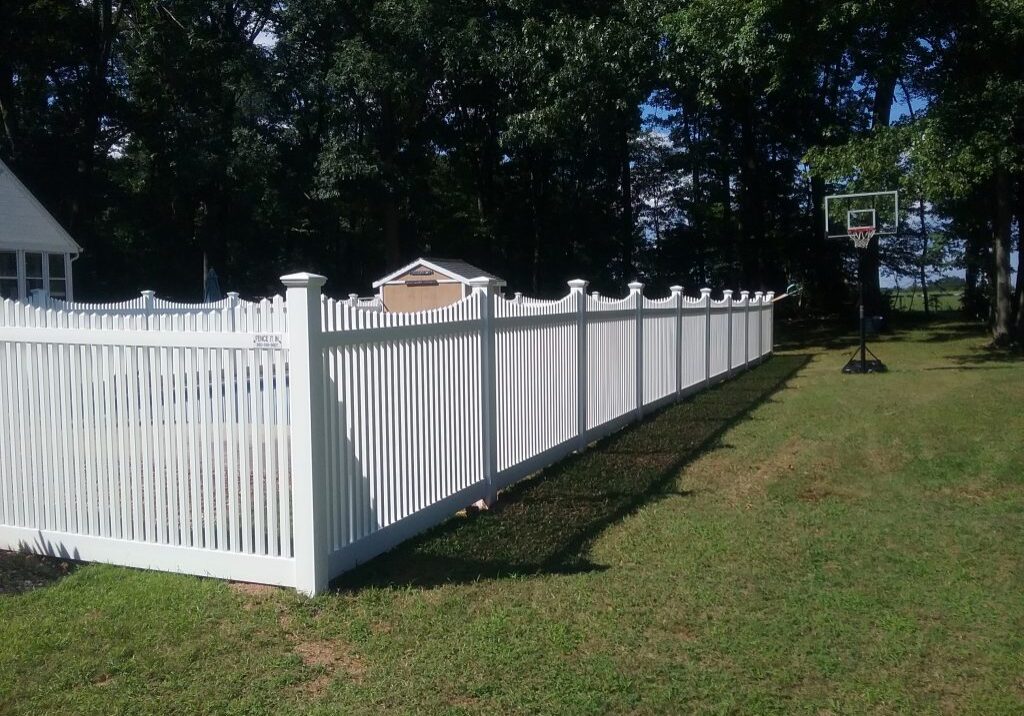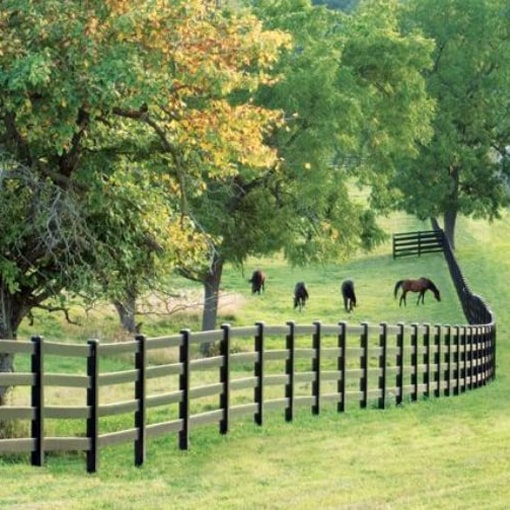Featured
When securing your building, choosing the appropriate fence elevation is important for both privacy and safety and security. The height of your fencing plays a considerable duty in identifying how reliable it will be at shielding your home or organization from burglars. While a high fencing could feel like the most effective alternative, the excellent height relies on a number of aspects, including protection demands, local policies, and the products utilized. Below, we'll detail vital factors to consider to aid you pick the excellent fencing height for ideal security.
![]()
If you reside in a community regulated by a property owners' association (HOA), you should also review any specific guidelines they have for fence elevation, style, and products. Abiding by these laws ensures you stay clear of lawful issues and preserve a good connection with your neighbors.
Taller fences are harder to scale and can considerably reduce the likelihood of break-ins. Including features like pointed tops, barbed cable, and even electrical fence can even more increase the barrier's safety. A fence that gets to 8 feet or greater is typically effective at avoiding most people from easily jumping over it.
![]()
Wood Fences: While wooden fencings provide personal privacy, they can be simple to climb, particularly if there are no anti-climb features. For optimal safety, consider a wood fence that's 6 to 8 feet high with sharp tops or trellis extensions that make it more challenging to scale. Chain-Link Fences: Chain-link fences are commonly a lot more inexpensive and long lasting than timber, and they can be constructed to the essential height for safety. To boost prevention, consider including barbed or razor wire on the top. These attributes prevent climbing up and make the fencing more tough to breach. Wrought Iron Fences: Wrought iron fencings are commonly used for high-security objectives as a result of their strength and toughness. Their vertical bars make it hard to climb, and they can be constructed to 6 to 8 feet high with extra spikes or ornamental anti-climb functions to more protect the perimeter. Plastic Fencings: Vinyl is a superb choice if you need a strong, personal fence, but like timber, plastic fences may need extra height or protection features to deter climbing. Go with a fencing that is at the very least 6 feet high to ensure privacy and safety. Each material offers various benefits in regards to looks, sturdiness, and maintenance, so it's important to consider your particular requirements and preferences when picking a fence.
Anti-Climb Functions: Setting up sharp or pointed tops, trellis expansions, or protection spikes on top of the fence makes it much more tough for anybody to scale the fencing. These attributes work as a strong deterrent to prospective burglars. Barbed or Razor Cord: Adding barbed cord or razor cord on top of your fence raises protection dramatically. This is typically made use of in high-security locations, such as commercial homes, but can likewise be a great option for residential homes in high-risk locations. Electric Secure fencing: For top-level protection, you may intend to consider adding an electric fencing to your residential property. Electric fence, when mounted correctly, can develop a strong deterrent while remaining relatively very discreet. It provides a moderate shock to any person who tries to touch or climb the fencing. Combining height with these additional functions makes sure that your fencing gives the greatest degree of protection.
Stabilizing the demand for personal privacy and security while preserving the visual allure of your residential property can help you choose the appropriate elevation and product for your fencing. See to it that your fence matches the general design of your home and doesn't adversely affect the visual allure.
![]()
By very carefully thinking about all these elements, you can develop a protected, exclusive, and attractive limit around your residential property that offers both assurance and protection.

- Understand Local Laws and Zoning Rules. The primary step in selecting your fencing elevation is to acquaint yourself with regional regulations. Many districts have zoning laws that dictate the maximum permitted height for fencings, specifically ahead lawns and along residential or commercial property lines. Usually, front yard fencings are restricted to 3 to 4 feet, while backyard fencings can be as high as 6 to 8 feet or more. Some locations may require a license for fencings over a particular elevation, so it's vital to talk to your regional zoning workplace before starting building.
If you reside in a community regulated by a property owners' association (HOA), you should also review any specific guidelines they have for fence elevation, style, and products. Abiding by these laws ensures you stay clear of lawful issues and preserve a good connection with your neighbors.
- Establish the Preferred Level of Security. The level of safety you require is a significant factor in determining the ideal fence elevation. A fence in between 4 to 6 feet may be sufficient if you're looking to discourage informal intruders or maintain youngsters and pets inside the backyard. For greater safety and security needs-- such as securing against robbers or making certain security in high-crime locations-- you might need a taller fence. A fence height of 6 to 8 feet is typically recommended for optimal security.
Taller fences are harder to scale and can considerably reduce the likelihood of break-ins. Including features like pointed tops, barbed cable, and even electrical fence can even more increase the barrier's safety. A fence that gets to 8 feet or greater is typically effective at avoiding most people from easily jumping over it.
- Choose the Right Product for Your Fencing. The product of your fencing plays an essential duty in its ability to supply protection. While taller fences are better for security, the kind of product you make use of can prevent the efficiency or enhance of the height. Below are some preferred fence products for protection:

Wood Fences: While wooden fencings provide personal privacy, they can be simple to climb, particularly if there are no anti-climb features. For optimal safety, consider a wood fence that's 6 to 8 feet high with sharp tops or trellis extensions that make it more challenging to scale. Chain-Link Fences: Chain-link fences are commonly a lot more inexpensive and long lasting than timber, and they can be constructed to the essential height for safety. To boost prevention, consider including barbed or razor wire on the top. These attributes prevent climbing up and make the fencing more tough to breach. Wrought Iron Fences: Wrought iron fencings are commonly used for high-security objectives as a result of their strength and toughness. Their vertical bars make it hard to climb, and they can be constructed to 6 to 8 feet high with extra spikes or ornamental anti-climb functions to more protect the perimeter. Plastic Fencings: Vinyl is a superb choice if you need a strong, personal fence, but like timber, plastic fences may need extra height or protection features to deter climbing. Go with a fencing that is at the very least 6 feet high to ensure privacy and safety. Each material offers various benefits in regards to looks, sturdiness, and maintenance, so it's important to consider your particular requirements and preferences when picking a fence.
- Include Protection Functions for Additional Security. While elevation is essential, adding added safety functions to your fence can boost its performance. Take into consideration the following enhancements:
Anti-Climb Functions: Setting up sharp or pointed tops, trellis expansions, or protection spikes on top of the fence makes it much more tough for anybody to scale the fencing. These attributes work as a strong deterrent to prospective burglars. Barbed or Razor Cord: Adding barbed cord or razor cord on top of your fence raises protection dramatically. This is typically made use of in high-security locations, such as commercial homes, but can likewise be a great option for residential homes in high-risk locations. Electric Secure fencing: For top-level protection, you may intend to consider adding an electric fencing to your residential property. Electric fence, when mounted correctly, can develop a strong deterrent while remaining relatively very discreet. It provides a moderate shock to any person who tries to touch or climb the fencing. Combining height with these additional functions makes sure that your fencing gives the greatest degree of protection.
- Take Into Consideration Privacy and Aesthetic Preferences. While security must be your main issue, it's also crucial to take into consideration the aesthetic charm of your fencing. Tall fencings might supply protection, however they can occasionally appear imposing or unfriendly. If personal privacy is an issue, a strong timber or plastic fence can provide both safety and privacy, while a wrought iron fence uses security with an open sight.
Stabilizing the demand for personal privacy and security while preserving the visual allure of your residential property can help you choose the appropriate elevation and product for your fencing. See to it that your fence matches the general design of your home and doesn't adversely affect the visual allure.

- Final Thoughts on Fencing Height and Security. Choosing the appropriate fencing height for optimum safety entails balancing numerous variables, including regional policies, the degree of safety and security needed, the material of the fencing, and added safety and security features. In general, a fence height of 6 to 8 feet is ideal for a lot of household buildings, with taller fences supplying an added layer of protection for high-risk locations.
By very carefully thinking about all these elements, you can develop a protected, exclusive, and attractive limit around your residential property that offers both assurance and protection.
Latest Posts
Discover the Elegance and Comfort of Carpets
Published Jan 20, 25
1 min read
The Vital Role of Brake Repair in Vehicle Maintenance
Published Jan 20, 25
1 min read
Top 5 Signs Your Overhead Door Needs Repair
Published Jan 20, 25
2 min read